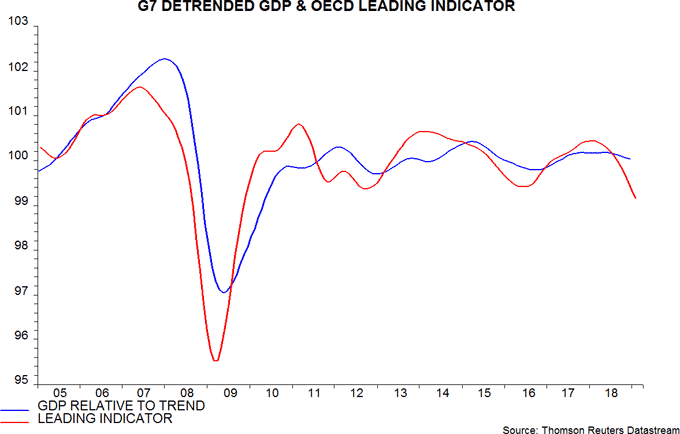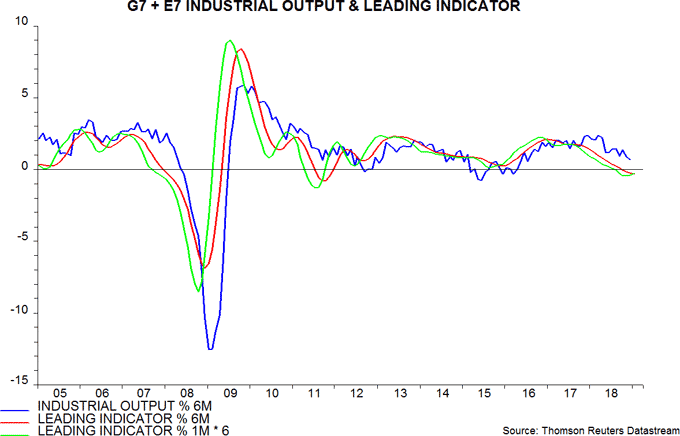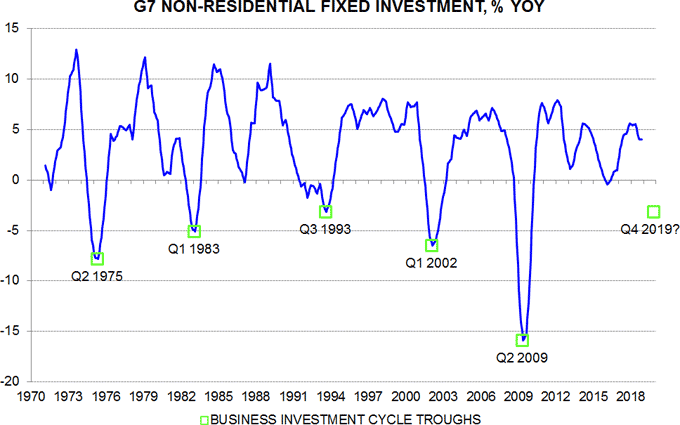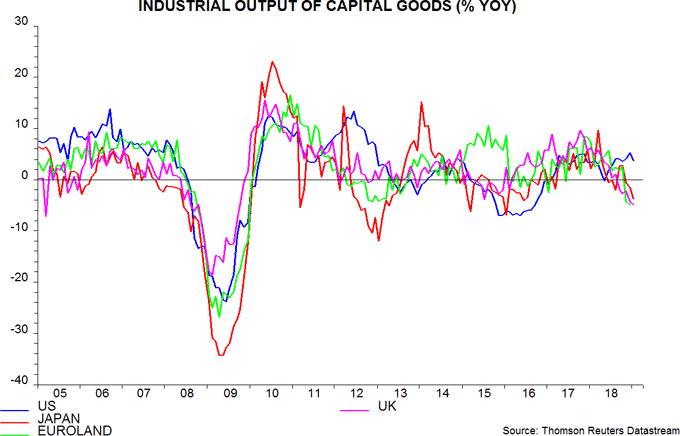OECD leading indicators still weakening
The OECD’s composite leading indicators support the expectation here of a further loss of global economic momentum into mid-2019.
The OECD’s indicators provide an independent, though less timely, cross-check of signals from monetary trends. With rare exceptions (e.g. Canada, India), the country indicators do not contain a monetary component. They tend to be dominated by business and consumer survey information, though also include financial indicators such as equity prices and the yield curve.
As previewed in a post last week, the G7 composite indicator registered another significant monthly fall in January, suggesting that GDP expansion will remain well below trend over coming months – see first chart.

The OECD’s practice of presenting its indicators in trend-adjusted form obscures important information about their internal momentum. An alternative approach followed here involves:
- Combining country indicators for the G7 and emerging E7 to create a “global” trend-adjusted measure.
- Combining this measure with an estimate of the trend in G7 plus E7 industrial output to form an indicator of the level of output.
- Using turning points in the rate of change of this indicator to anticipate turning points in industrial output momentum.
Historically, turning points in the six-month change in the indicator have led turning points in six-month output momentum by four to five months on average – second chart.

The central view here, based on monetary trends, is that global six-month industrial output momentum will bottom around July 2019. Such a scenario would suggest a low in the six-month change of the leading indicator in February or March.
Consistent with this scenario, the six-month indicator change continued to weaken in January. The one-month change, however, recovered marginally – this could be a precursor to the six-month change bottoming over the next several months.
The suggestion that economic momentum will reach a low around July does not imply an optimistic assessment of prospects for later in 2019. Developments judged here to be necessary to warrant such an assessment include:
- A further pick-up in G7 plus E7 six-month real narrow money growth to 3-4% (not annualised) from January’s level of 1.9%.
- Confirmation of a bottoming out of the six-month leading indicator change by April (data to be released in early June).
- Sufficient weakness in stockbuilding and business investment data in the first half of 2019 to suggest completion of cycle downswings during the second half.

On the latter point, a correspondent asked whether solid investment data for the US and Euroland in the fourth quarter of 2018 altered the assessment here about the timing and magnitude of a cycle downswing. The answer is no. Year-on-year growth of G7 non-residential fixed investment was unchanged in the fourth quarter and below a peak reached in the second quarter – third chart. Investment is closely correlated with industrial output of capital goods, which fell significantly year-on-year in Japan, Euroland and the UK in December / January – fourth chart. The relationship shown in the fifth chart, meanwhile, suggests that US investment resilience will crumble – the identity of the mystery indicator may surprise readers.



Reader Comments (3)
I’m intrigued to know what the mystery indicator is.
So am I...
A reader correctly identified the indicator as residential fixed investment. The relationship partly reflects housing activity responding more swiftly than business investment plans to changes in monetary conditions. In addition, housing swings affect general economic activity, resulting in “accelerator” feedback effects on business spending.